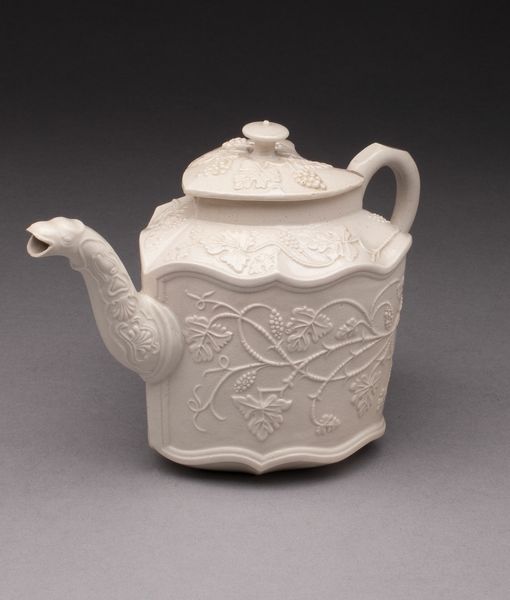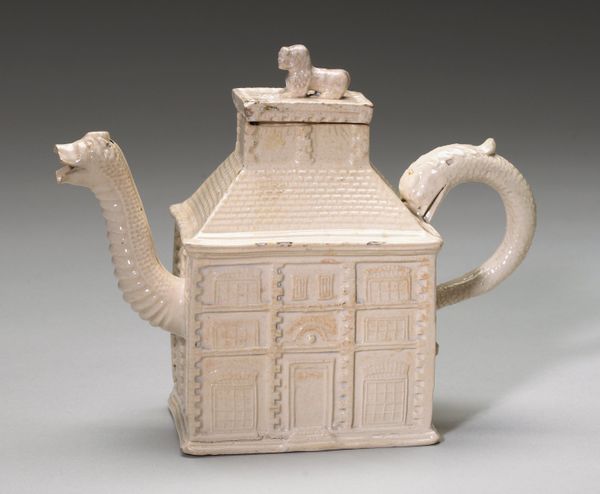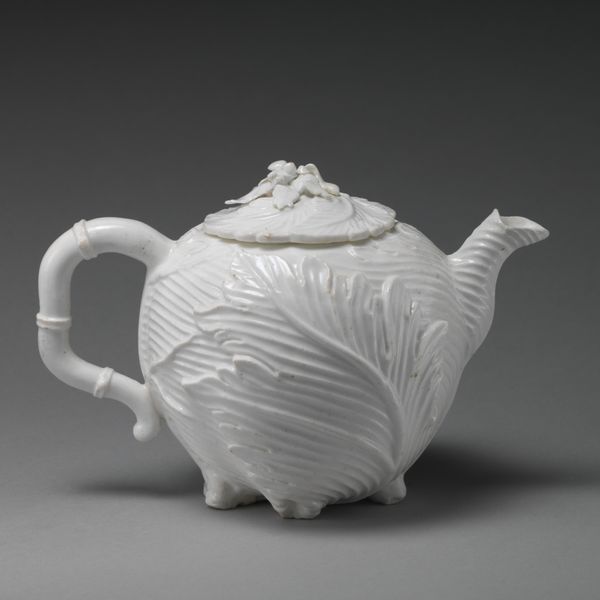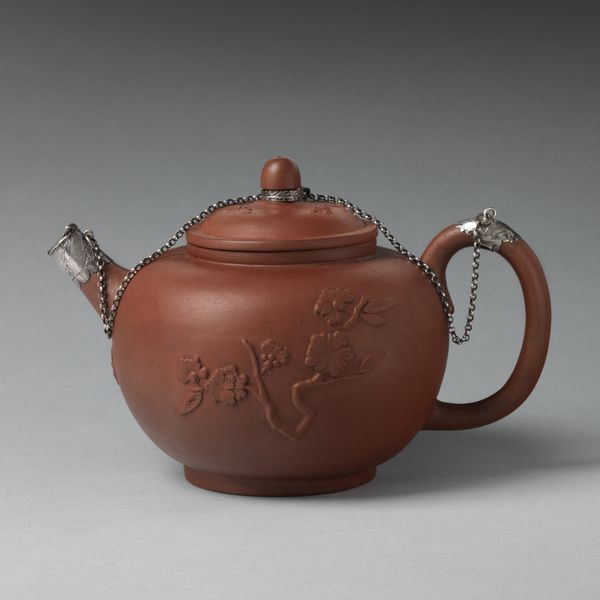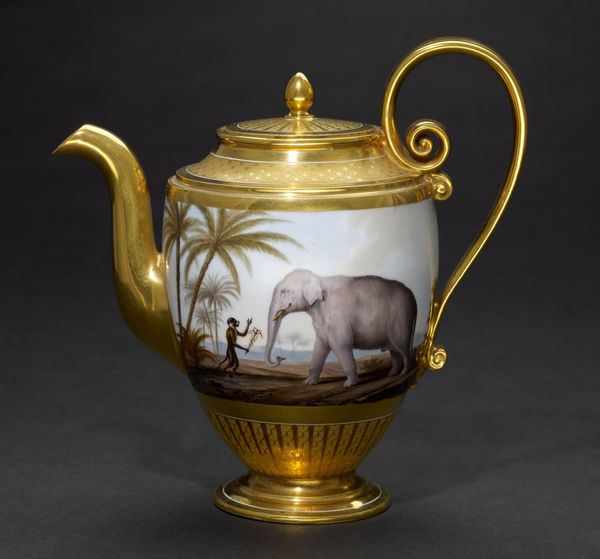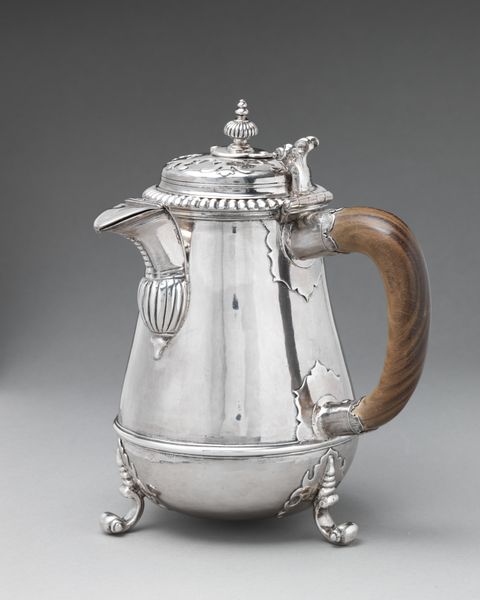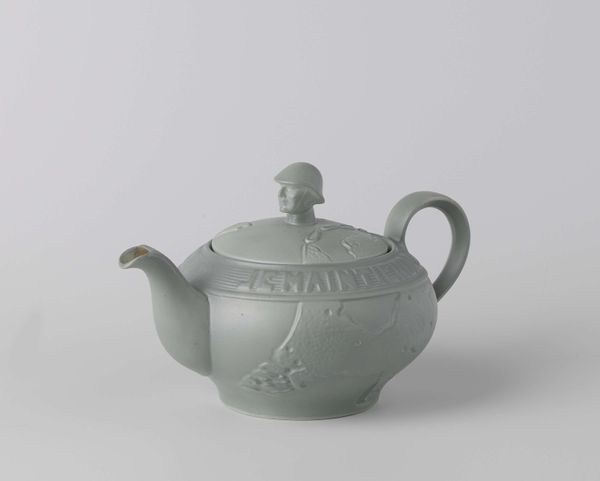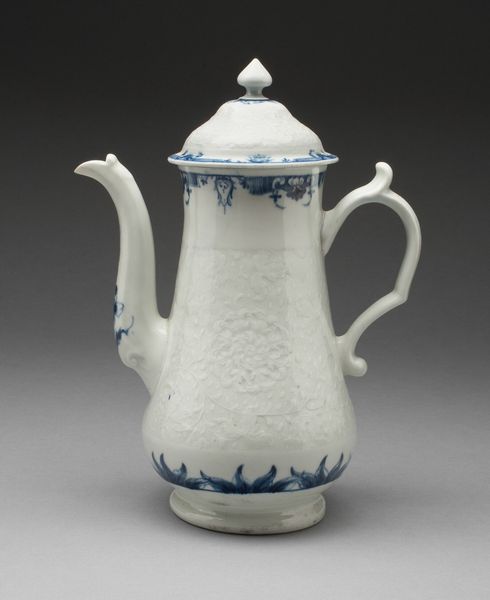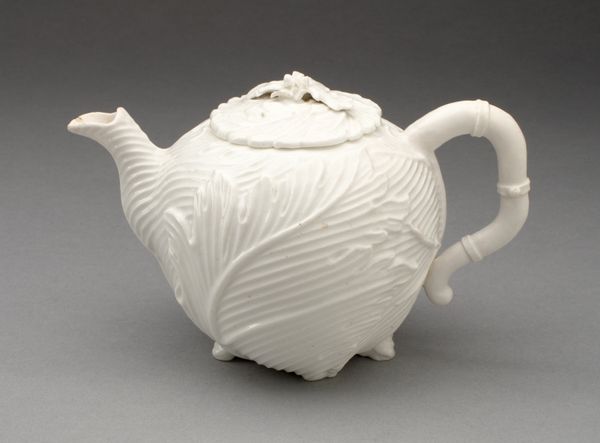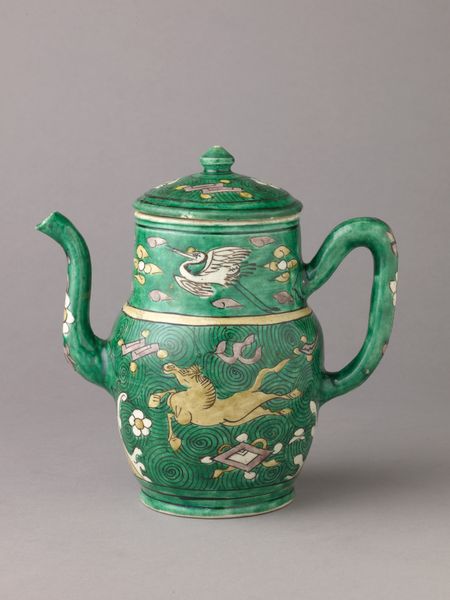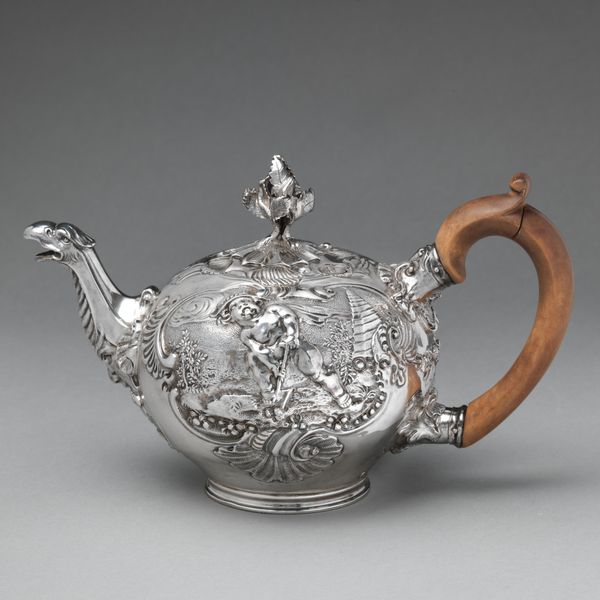
ceramic
#
ceramic
#
ceramic
#
decorative-art
#
rococo
Dimensions: 17.8 × 14.6 cm (7 × 5 3/4 in.)
Copyright: Public Domain
This creamware teapot in the shape of a camel was made by the Staffordshire Potteries, in England, most likely during the late 18th or early 19th century. The camel form, complete with saddle and driver, speaks to a culture increasingly aware of global trade and colonial exploits. The Staffordshire potteries were deeply embedded in a network of transatlantic commerce. Raw materials such as clay and tin came from Cornwall, while the finished products were shipped to ports as far afield as the Americas and India. The labor practices within these potteries, however, were far from equitable, with long hours and dangerous conditions being the norm for many workers. Examining documents from the period such as trade ledgers, inventories, and pattern books, alongside archaeological evidence from factory sites helps us understand the complex social and economic dynamics at play in the creation and consumption of these objects. The study of an object like this teapot brings into focus not only the artistry of the potter but also the wider social conditions that made its creation possible.
Comments
No comments
Be the first to comment and join the conversation on the ultimate creative platform.
